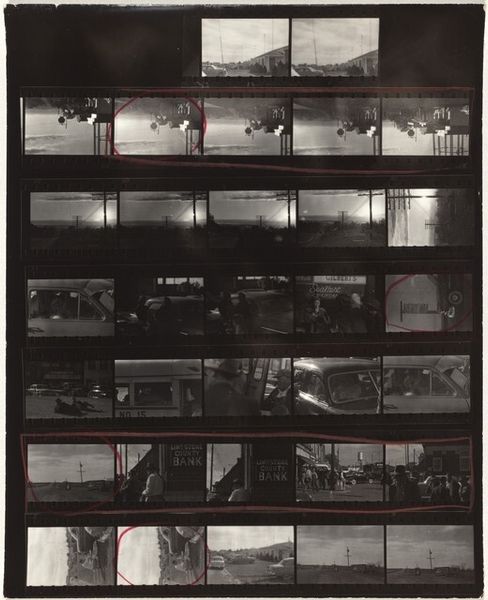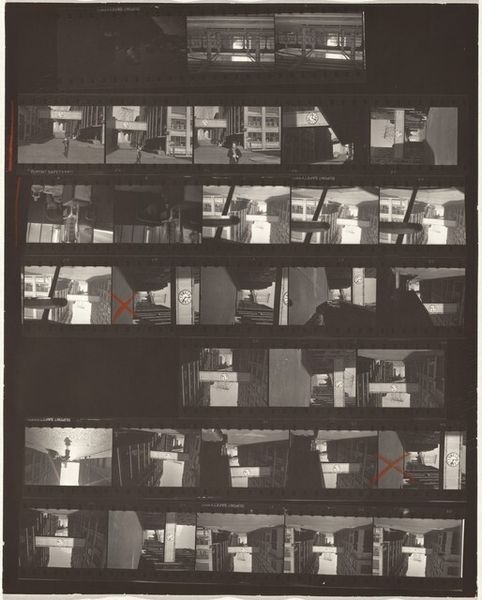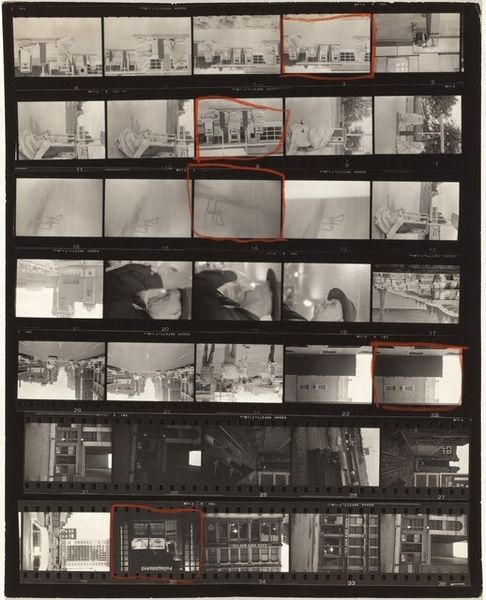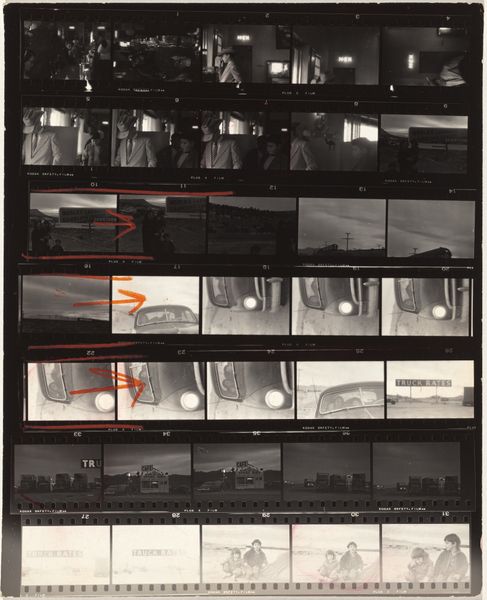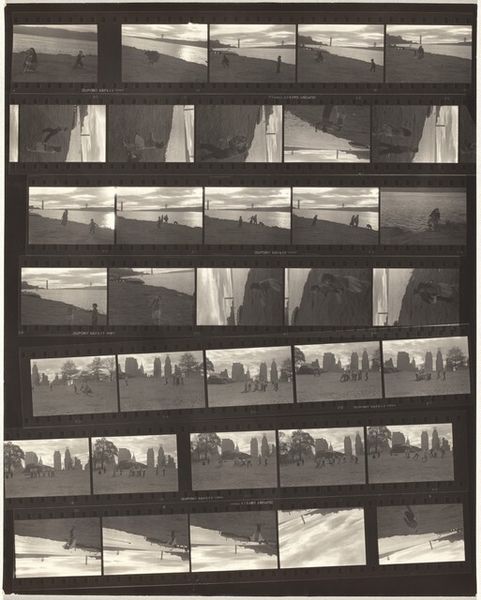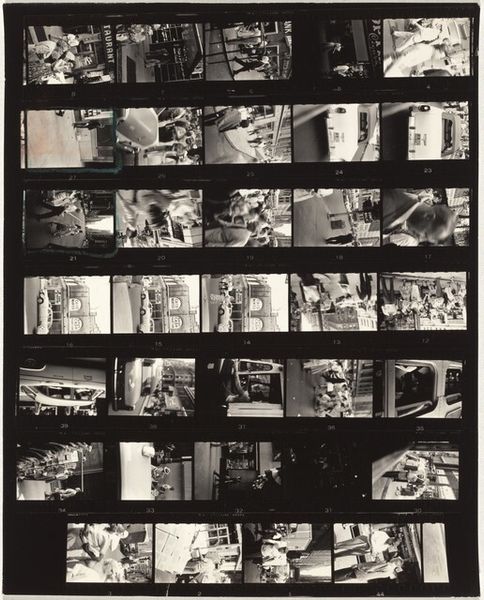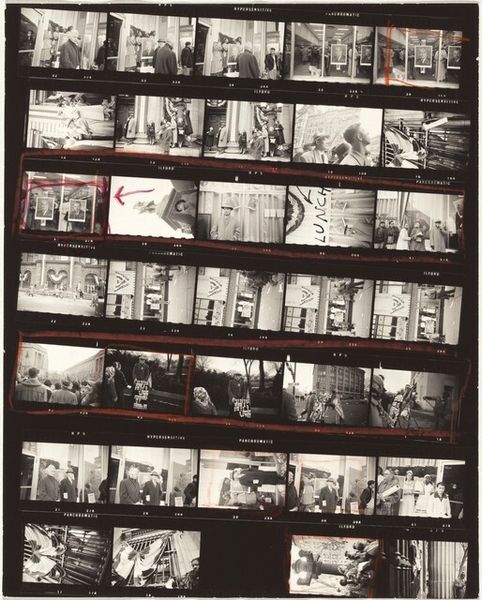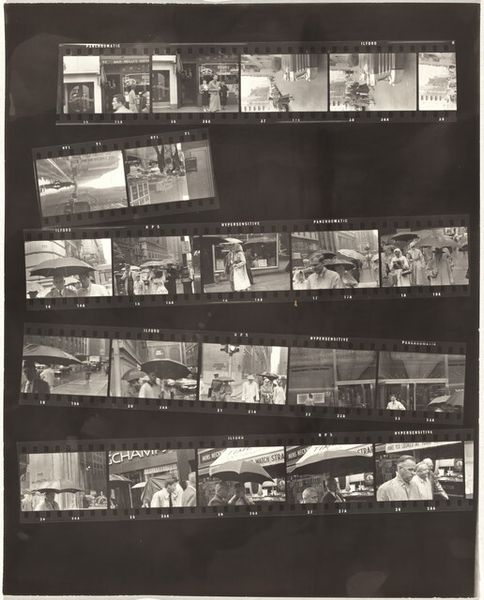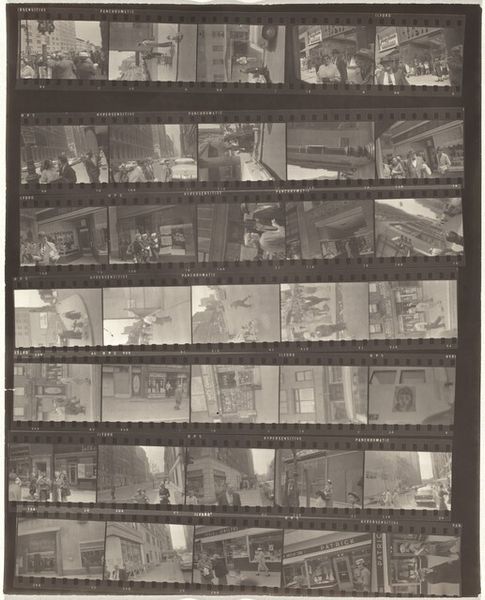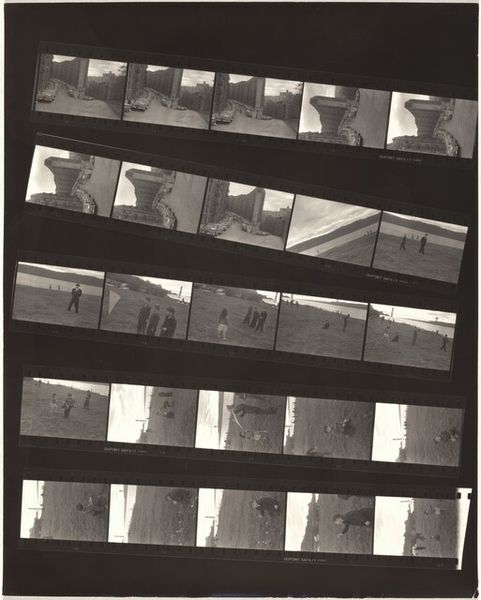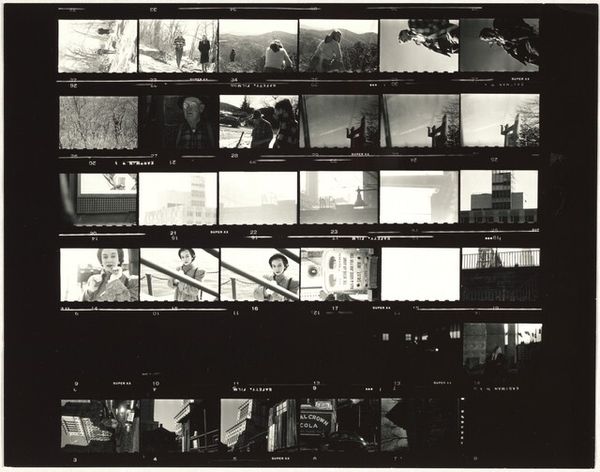
contact-print, photography
#
surveyor photography
#
landscape
#
contact-print
#
street-photography
#
photography
#
pop-art
#
cityscape
#
realism
Dimensions: overall: 25.2 x 20.2 cm (9 15/16 x 7 15/16 in.)
Copyright: National Gallery of Art: CC0 1.0
Curator: This is Robert Frank's contact sheet, "Back lot--Hollywood 85," created in 1958. It provides an insight into the raw process of Frank's photographic explorations, revealing the selections made during his pivotal "The Americans" project. Editor: It's strangely intimate. It feels like sneaking a peek at his visual diary, a little disorganized, a little anxious. So many frames...like he's searching. Curator: Precisely! It offers unique access to Frank's editing process. The markings, the circled frames—they indicate the images that resonated most. It humanizes him, beyond just the role of ‘artist’, exposing the vulnerability in artistic interpretation and decision-making. Editor: The contrast of light and shadow feels incredibly strong, almost like a storyboard for a noir film. And those recurring images of the side-view mirror— there’s a sense of constant movement, of searching through fragmented glimpses. Were those photos of driving across the United States, that eventually formed his seminal photo-essay? Curator: That’s right. He meticulously documented a rapidly changing post-war American society. It's all there in the collection "The Americans." This particular contact sheet gives some indications about which images are most relevant for the final selections. We are really seeing here the unvarnished journey behind some pretty amazing photography. Editor: Knowing the context, the choices really pop. Some scenes are framed perfectly, even by accident, it seems. It is an odd contrast; like how random life really is and what, to do, it makes you choose with so much attention to what details should matter most, and what should not. This work captures his vision, one where his own view plays into something that really feels very American. Curator: Agreed. Frank wasn't interested in idealizing America. His work often presents the nation with unflinching honesty. The contact sheet becomes more than just discarded outtakes, or evidence. This becomes a time capsule, showcasing his distinctive viewpoint amidst cultural shifts, the anxieties of progress, and a pursuit for something 'true'. Editor: This makes me reconsider "Happy Accidents," not the myth of it but what kind of space is opened to embrace it with an art piece that at a certain level shows exactly where we want it to arrive from start, what do you think about this final idea? Curator: Robert Frank was an unconventional surveyor of American cultural norms in a very conventional time. His critical perspectives resonate today in socio-political imagery because artists take positions regarding culture and society in subtle and unconventional ways. Editor: Okay. Makes total sense. Thanks.
Comments
No comments
Be the first to comment and join the conversation on the ultimate creative platform.
